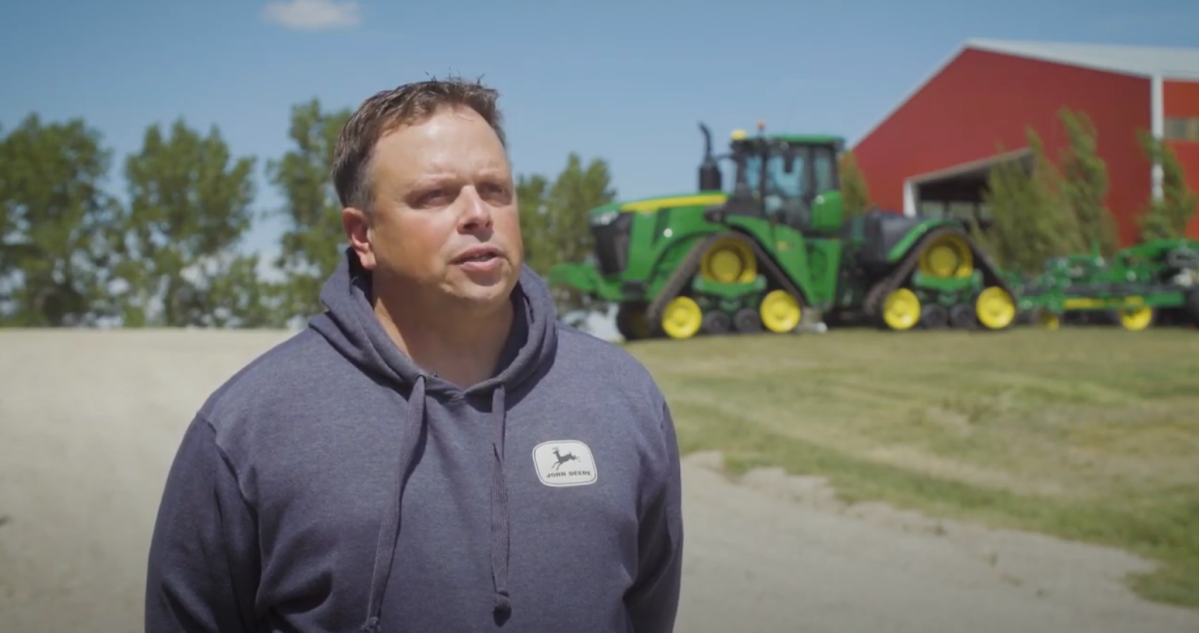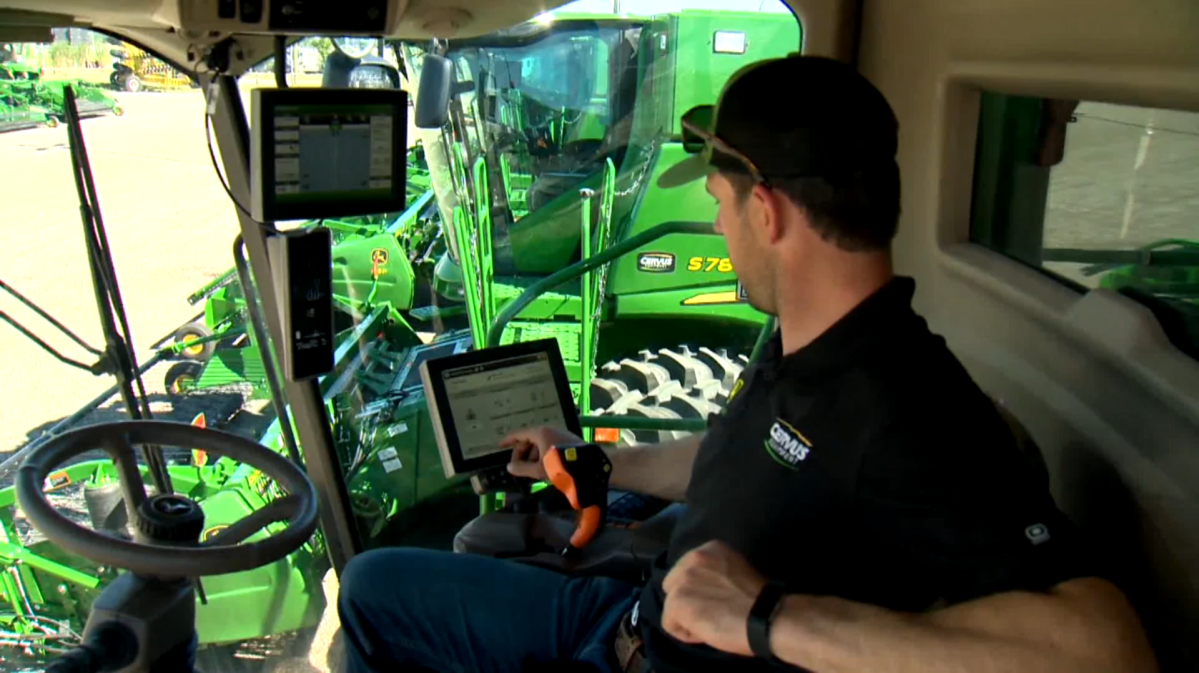The agriculture industry continues to adopt some of the most advanced technology available when it comes to their equipment — making operations more efficient, safe and environmentally friendly.

Sterling Hilton is a fifth-generation farmer with land near Strathmore, Alta., and said farmers often don’t get the credit they deserve, especially when it comes to being environmentally conscious.
“Agriculture might have a reputation of doing things traditionally,” Hilton said. “But, I feel that agriculture is one of the most exciting areas to be in right now as far as adopting technologies and the difference that it makes on our operations.”
“The good news story is how efficient and accurate now we are able to apply our inputs, and that is an environmental success story.”
Hilton has been driving tractor and helping on the farm since he was young, so he’s seen firsthand how beneficial it is to have smart equipment.
“I really find that the advances in technology — in the last 20 years in agriculture — have been dramatic and that’s led to a lot of increases in efficiencies and precision in applying our products,” Hilton said.
Brent Nicol, the Precision Ag Manager with Cervus Equipment, agrees and said technology has started to play a major influence in the day-to-day operations that we see within agriculture.

Get daily National news
“We’re working more to evolve, get out to the ground, and focus more on safety and sustainability as we move throughout our agriculture industry,” Nicol said.
“We’re in here, trying to make the agriculture world a better place. Technology can help us do that.”
Hilton remembers being a kid and sitting in the tractor for hours on end, day after day, and sometimes without air conditioning — which led to fatigue and mistakes.
In the early 2000s, auto-steering became more common in new equipment, which was a big improvement, helping with productivity and operator safety.
“(Auto-steer) added huge efficiencies as far as, less overlap and getting over the land in a more timely fashion and allowing us to to to do sensitive areas at better times of the day and come back to it later,” Hilton said.
That was 20 years ago. Since then, Nicol said technology has started to play a major influence in the day-to-day operations in agriculture.
“We’ve come a long way from finding that similar line in the fold and using our own personal line of sight to actually using the technology that we have to drive straight lines,” Nicol said. “Now we’re working more to evolve, get out to the ground and focus more on safety and sustainability as we move throughout your agriculture industry”
Advances include increased precision agriculture to being able to diagnose a breakdown from an app and getting the equipment back up and running as quickly as possible.
“With these smartphones now I can actually, from anywhere in the world, log into one of the machines that one of my operators working on and actually troubleshoot with them,” Hilton said.
Nicol said, like everything, technology built into farm equipment will only continue to evolve.
“The nice thing about this technology… everything in there has a purpose,” Nicol said. “So as we go through and do these different things… technology will evolve, whether we look at things like automation, more and more ways for us to help users go through and operate.”
- Calgary Fire Department looking for cause of explosion and townhouse fire in Mahogany
- Brace yourself: 3 more waves of snow set to hit Alberta this weekend
- Calgary Police investigating if Bitcoin threats and suspicious fires are related
- Rate hikes, no-fault claims in new rules pitched for Alberta auto insurance








Comments